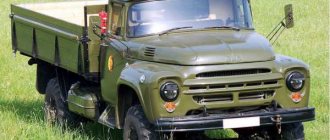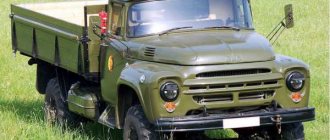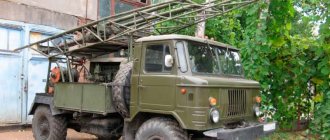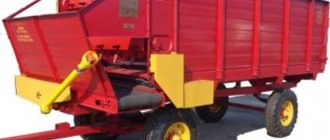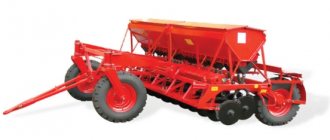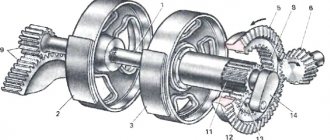How much does a GAZ car weigh for scrap metal?
As a result of long-term use, most Soviet-made cars fell into disrepair.
The question of how much a GAZ 3110 weighs for scrap metal becomes quite clear. Such interest is not limited to one brand of car, extending to the entire range of vehicles produced by the domestic automobile industry. GAZ 3110 has a weight close to 1500 kg. Those wishing to scrap this car should familiarize themselves with the principles of this procedure. When disposing of a vehicle as a whole, employees of metal collection points will deduct 30% of its total weight. Conventionally, this percentage reflects the share of non-metallic elements and contaminants formed during operation.
Other domestically produced cars were no less popular. Therefore, a significant number of people are also trying to find out how much the GAZ 31029 weighs for scrap metal (1420 kg). Of course, the weight of the vehicle is a key factor in determining the amount of profit from recycling. It should be remembered that the owner of the car is able to independently regulate the amount of income received. An alternative to scrapping an entire car is dismantling it yourself, so you can sort different types of metals. By handing them over separately, you can actually earn a more significant amount of money. If high-quality spare parts are available, they can be sold by advertisement or in any other way.
Features of truck recycling
How much does a GAZ 3307 flatbed weigh for scrap? Such questions are not uncommon in the post-Soviet space. Determining the exact weight of scrap will become possible after clarifying the mass of non-metallic inclusions. The latter include cabin cladding material, wheels, glass, plastic and other elements. Visually, the receiver determines the weight of the blockage. It should be taken into account that companies specializing in the acceptance of scrap or recycling of machines use different pricing policies. Therefore, before contacting a specific organization, it is advisable to analyze the cost of metal in a specific region.
In order to make a profitable exchange of an unnecessary car for banknotes, it is not enough to know how much a GAZ 53 (or another brand) weighs if you want to sell it for scrap. Calculating the value of a vehicle as scrap is carried out in several stages:
- the total weight of the vehicle is determined;
- the mass of individual structural elements is calculated - frame, body and others;
- the type of metal underlying the spare parts is established;
- The final cost is calculated according to the current price list of the organization.
Let's consider how much a GAZ 52 (dump truck) weighs for scrap metal. According to the passport, the car weighs 2.5 tons. It contains about 70% pure metal, that is, 1.8 tons .
In order to get the real amount of revenue, you need to multiply the net weight by the current scrap price. The amount of funds received may also be affected by transportation costs associated with delivering the truck to the collection point.
Regardless of the amount of additional costs, recycling old vehicles is cost-effective. In addition, this is an affordable opportunity to free up useful space from unnecessary trash, no matter how much it has accumulated.
Source
Average weight of GAZ cars
Before going through this disposal procedure, you must familiarize yourself with its rules. Typically, companies and recycling centers deduct 30% of the total weight of the machine for non-metallic parts and contaminants. For example, a GAZ 3110 car weighs 1500 kg, but the owner of the car will be paid only 1050 kg.
During the Soviet Union, other models of the GAZ brand were also in demand. That is why a large number of people want to get information about how much the GAZ 31029 weighs for scrap metal. Its weight is 1400 kg.
Of course, the amount of money received from recycling directly depends on the amount of scrap metal. However, do not forget that the owner is able to independently regulate the price of disposal. To do this, he can disassemble his car, sort the metal into ferrous and non-ferrous, and then sell the parts and make a profit. If the parts remain in good condition, then they can be sold by selling them to another GAZ owner.
Car recycling
Interest in how much a GAZ 3307 weighs on board for scrap metal is not so rare in Russia.
As a rule, the exact weight of individual car parts can be found by subtracting the percentage of all non-metallic inclusions. These may include plastic, glass, fabric, rubber and other elements. A specialist at the receiving point usually estimates the percentage of non-metallic parts by eye, that is, approximately.
Also, in order to avoid various misunderstandings, it is worth remembering that different companies offer different prices for one kilogram of scrap metal. Before deciding to recycle, you need to find out the average cost of scrap metal in the region.
To recycle an unnecessary car, it is enough to have information about how much a GAZ 53 weighs for scrap metal or any other brand of vehicle. The approximate cost of disposal is calculated using the following algorithm:
- Set the total weight of the vehicle.
- Set separate mass values for different parts.
- Determine the type of metal.
- Calculate the cost of disposal based on the price list of the recycling company.
How much does GAZ 52 weigh for scrap metal? Its weight is about 1800 kg.
How much does a GAZ 53 dump truck weigh for scrap metal? It weighs about 2500 kg, but the mass of pure metal is 1800 kg.
It should be noted that if the owner of a vehicle of any brand does not understand them at all, does not know where to sell individual parts, their value and cost, then it is strongly recommended not to disassemble the car yourself. It is best to contact a special company or organization where everything will be done efficiently and environmentally friendly.
Source
Fuel truck GAZon 3309 | Tanker | ATZ
Information for choosing the right tanker:
Tankers for transporting food liquids are divided according to their purpose, according to the name of the liquid for which they are designed:
| Milk tanker | transports liquid dairy products |
| Water carrier | transports mineral, fresh, sea water |
| Oil truck | transports vegetable and sunflower oil |
| Alcohol truck | transports alcoholic liquids, drinks, alcohol * |
* Special production and design requirements apply to the technical characteristics of the alcohol tank. All modern tanks that transport perishable liquid cargo are made of stainless steel, since its use is due to its unique properties. Stainless steel does not react chemically with transported liquids and does not oxidize. To achieve maximum shelf life without compromising product quality, the tanks have thermal insulation properties and are able to transport cargo at temperatures up to “+35°C” without changing the internal temperature of the liquid. In addition to heat-insulating materials, in conditions of low temperatures in cold climates, tanks are also equipped with special heating. In the production process of food tanks, only high-quality materials are used that meet all safety standards.
Tankers are divided according to the volume of transported products, liters:
| 1000 | 9500 |
| 1200 | 16000 |
| 3900 | 19000 |
| 4200 | 24000 |
| 7500 | More than 24000 |
They are classified according to the type of tank installation:
| Trailer |
| Semitrailer |
| Based on a car chassis |
Basic components, depending on the type and class of the tank:
| Tank liquid level sensor |
| Suction and delivery hoses |
| Flow meters |
| Special shut-off valves for hatches. |
| Drain pump | pouring liquid through hatches |
| Drain tap |
| And others, the installation of which is prescribed in the technical specifications for the manufacture of a tank truck. |
Moreover, the container can be divided into several compartments and simultaneously transport several different types of liquid at once. Our company offers to install a tank on the chassis of a GAZ 3309 car for transportation of food and liquid products. Our company’s engineers have extensive experience in designing tanks that are of very high quality, wear resistance and meet all safety requirements imposed on them. Moreover, the tank installed on the chassis of the GAZ 3309 allows you to transport up to 5000 liters of cargo, and given the relative compactness of this truck, it makes it as maneuverable as possible, which allows you to freely transport milk, water and other food liquids along city roads. Our specialists have already successfully designed and developed tank trucks for the largest dairy plants in Russia, including the Murmansk region. Water carriers were supplied to leading municipal utilities in the region. Moreover, water carriers are a competent solution for delivering food water to the location of workers and shift crews who are located in hard-to-reach places without water pipes and other utility systems.
Technical characteristics and dimensions of the GAZ 3309 food tank:
| Chassis | Type | Density, t/cub.m. | Number of compartments | Cross-sectional shape | Self-priming height, m | dimensions | Curb weight, kg | Total weight, kg | ||
| Length | Width | Height | ||||||||
| 3309 | ATZ | 0,86 | 1-2-3 | Oval | 4,5 | 6550 | 2260 | 2650 | 3965 | 8180 |
Each tanker model must be carefully developed and designed according to the specifics of the terrain in which the equipment will be operated and the type of cargo or liquid being transported. Our company offers only high-quality and reliable products, taking into account all your wishes, needs and work characteristics.
see also
Comments 27
I usually flush the system with this oil. During operation on cars, and the Gazelle stopped at the Avangard, I will also pour it into the GAZon - it washes well, lubricates well, no signs of turning into fuel oil were found.
Was it dirty, has it become cleaner, or does it leave nothing behind?
It washes when the dirt is not on the walls in the form of deposits, but in the pan in the oil.
So the oil poured in front of the vanguard, say, under the valve cover, left traces of its presence and Lukoil corrected it? The opinion that if the oil quickly turns black means it washes is not entirely correct, a shaky engine can itself quickly dirty the oil
No not like this. Wash the engine, for example during disassembly or partial disassembly. Then fill it with fresh oil and drive away. After some time, we open the valve cover, for example (before the first replacement or after a couple of replacements) and look at the walls, they should not be covered in deposits. If the oil has not darkened after changing and running 5-6 thousand, I think it’s not oil, but bullshit. Because the design of the internal combustion engine is such that wear of the mechanical parts is always present. The oil flows into the pan and should wash away these wear products. Whatever the filter, it cannot, with the wave of a magic wand, lift everything from the pan and filter it. At its core, the sump is a sump. Clean oil with high mileage is a reason to think about the quality of the oil.
Yes, the oil is rubbish, I also pour myself LUKOIL Avant-Garde, both in KAMAZ and in Zila
I won’t argue, I filled it up for a temporary period so as not to drive on last year’s car while I’m working on the car, driving according to my needs, the mileage is insignificant without winter, I’ll eliminate the snotty, I’ll fill it with decent oil
But don’t you want to get rid of the centrifuge? on new tractors and machines there is a screw-on filter, you change the oil, unscrew it and install a new one, you just need to buy an oil filter housing and install it instead of a centrifuge and that’s all, well, that’s just advice))
We’re sitting at the table, everyone has already given in, and then one guy wants to clink glasses with another guy sitting on the other side, they grab a shot glass from the middle of the table, clink it with the one further away and return it, a friend next to him has five-ruble eyes rolling out with the words “why was that possible?” It is necessary to study the question of the feasibility of finding out what cleans better; from a financial point of view, a centrifuge is of course more economical
the centrifuge removes all the additives in the oil, well, good luck on the roads
Where did the info come from, it became really interesting. I know about particle fur, but this is the first time I’ve used the built-in separator function. :)))
We’re sitting at the table, everyone has already given in, and then one guy wants to clink glasses with another guy sitting on the other side, they grab a shot glass from the middle of the table, clink it with the one further away and return it, a friend next to him has five-ruble eyes rolling out with the words “why was that possible?” It is necessary to study the question of the feasibility of finding out what cleans better; from a financial point of view, a centrifuge is of course more economical
It is better in all respects if it is in good working order and not worn out - wear is its main drawback.
backlash and lack of tightness in the mechanism itself. Put it together and see how it works, it will become clear right away.
Allwright? I wouldn’t even buy a tube of lithol from this company... If you want good oil at an affordable price, buy Lukoil Avangard, I’ve been using equipment on it for 8-9 years. In your case, 15w40 viscosity will work well, and the pressure should rise. But a well-warmed unit (loaded after going uphill) also has good pressure at 245 with a centrifuge.
The design of a car engine for GAZ-53
The main advantage of the GAZ-53 engine is its efficiency and decent technical potential.
- The base of the GAZ-53 gasoline engine is a simple carburetor with a “V” shaped installation of cylinders. This arrangement increases engine power and torque.
- The next distinguishing feature is the screw exhaust valve and high turbulence chamber in the cylinder heads, which improves efficiency.
- The presence of an exhaust gas recirculation system, which reduces the amount of emissions into the atmosphere.
- Carter.
- Gear box.
- Combined lubrication system.
- The liquid-based cooling system ensures smooth operation even in hot weather.
characteristics, device, photos and videos
Habitually using public amenities, we least of all think about the highways somewhere deep below us, along which everything washed away and drained moves, and about the wells where it accumulates. In fact, there is no miracle in the disappearance of waste products and all engineering communications, which are not usually discussed in polite society and at the table, are an ordinary technical system that requires repair and maintenance. Almost the main tool in this process is sewage disposal vehicles, created mainly on the basis of the chassis of GAZ cars of various modifications.
Sewage truck based on GAZ chassis
Sewage disposal machines are used wherever there is a need to pump out liquids containing large amounts of organic and inorganic impurities - sand, silt, fecal matter. Actually, this determines the scope of their application:
- pumping out septic tanks of local sewage systems;
- cleaning drain systems of car washes, storm sewers;
- drainage of drainage and inspection wells, underground pipelines;
- drainage of drill holes and small reservoirs.
Design and principle of operation
The basis of the sewage disposal machine is a metal container that can be hermetically sealed. Since this special machine is faced with the task of pumping out not quite a liquid, but rather a suspension saturated with impurities, a vacuum pump is connected to this barrel. It creates a vacuum in the tank so great that through a wide corrugated receiving hose you can suck in, for example, all the water from the pond along with mud and crucian carp.
The vacuum pump is driven by the engine of a special machine through a switchgear connected to its gearbox.
When a certain level of liquid in the tank is reached, a sensor is triggered and the engine is turned off. After this, the pump drive transfer case is turned off, and the sewage disposal truck can move to a place (special site) where the barrel is emptied and its contents are disposed of.
Photo of the GAZ-53 sewer truck
GAZ sewage disposal vehicles are based on the chassis of the GAZ 53, 3307 and 3309 models. The basis of their design is an all-welded metal tank with a hermetically sealed neck at the top, to which the vacuum pump line is connected, and an inlet pipe with a large-diameter four-way valve at the bottom. It can withstand high pressure; on the inside, a chemical-resistant coating is applied to its surface, which protects the metal from corrosion and makes it easier to maintain the tank. The outside is usually painted bright red or orange.
The models differ somewhat from each other in the set of equipment and the way they work. For example, in sewerage machines based on the GAZ 3307, when the tank is filled, the engine driving the vacuum pump is automatically turned off; it has the longest intake hose - 6 meters.
Cars based on the GAZ 3309 have a lot of additional electrical equipment, including an automatic valve on the intake line and an audible signal that is triggered when the barrel is filled. The car based on the GAZ 53 has the largest tank, which has a compartment for clean water.
All sewage disposal vehicles, in accordance with traffic regulations, are equipped with flashing lights and painted in bright colors.
Specifications
Each sewer truck based on a GAZ car has its own technical characteristics, but the main difference is the volume of the barrel and the performance of the vacuum pump.
Technical characteristics of sewer trucks based on GAZ:
| Tank volume (m3) | Pump capacity (m3 per hour) | Additional capacities | Stopping pumping when filling the tank | Sound alarm | |
| Special vehicle GAZ 53 | 5 | 260 | add. cold water compartment | mechanical shutdown | There is |
| Special vehicleGAZ 3307 | 4 | 240 | No | automatic engine stop | There is |
| Special vehicleGAZ ZZ09 | 3,75 | 240 | No | electromechanical valve | There is |
Video review of the GAZ-3307 sewer truck:
allspectech.com
Technical parameters of ZMZ-53
The ZMZ-53 four-stroke gasoline carburetor power unit has been installed on the GAZ-53 since the late 70s.
Main technical characteristics of ZMZ-53:
- cylinders – 8 pcs.;
- maximum torque – 30 kg*force/m;
- engine capacity – 4.25 l, with minimum power – 125 l. With.;
- compression ratio – 7,6;
- minimum speed registers A-76 gasoline consumption - 210 g. at one o'clock;
- engine weight – 260 kg.
Design features of the transfer case
The transfer case on a car is designed to amplify torque and distribute it, as well as transmit it to the front and rear axles.
In addition, the RC “66-11” has a design for disabling and engaging the front drive axle. Structurally, it includes:
- a drive shaft on which there is a movable gear for connecting direct and reduction gears;
- intermediate shaft . It also has gears. One wheel engages a downshift, the second, movable, serves to engage axles;
- there is a drive shaft for the rear axle ;
- front axle drive shaft;
- control mechanism having shift levers and rods.
Transfer cases for GAZ-66 today are sold at prices starting from 12 thousand rubles.
Required Engine Maintenance
GAZ-53 engines have good endurance and a long service life. To extend its service life, it is recommended to carry out its maintenance. Timely measures will save money and time.
- Regular change of engine oil - every 6 thousand km traveled. The most suitable oil would be mineral-based or semi-synthetic.
- Periodically (every 1–2 thousand km) the cylinder head is tightened, as well as the spider intake manifold is attached.
- Adjust the valves after replacing the cylinder head gaskets or when tapping.
- When changing cylinder head gaskets or performing scheduled engine repairs, you should immediately tighten the bolts and belts on a cooled GAZ-53 engine. During the period outside of repairs, the condition of the belts is checked after 30 thousand km.
- In the summer, check daily that there is enough coolant in the system, as well as water, to avoid engine overheating.
- Monitor the oil level and the serviceability of the sensors on the dashboard. This should be done by the owners of Volga and UAZ. If there is insufficient oil in the GAZ-53 engine, top it up to avoid repairs.
- External inspection for oil leaks, which is the main possible engine breakdown.
All breakdowns should be repaired immediately as they occur. Disassembly of the GAZ-53 engine is carried out with special tools and experienced employees in the workshop.
Change of oil
You can change the oil in the GAZ-53 engine yourself by performing the following manipulations:
- Unscrew the neck cap and remove the plug from the drain hole to remove residues. It is necessary to take precautions, as you can get burned.
- The plug is screwed into place.
- The filter also needs to be replaced - remove the old one, and pour a little oil into the cavity of the new one.
- Good quality oil is poured into the unit to the proper level.
- The GAZ-53 engine starts and waits 5–7 minutes for all mechanisms to be lubricated.
- The sensor readings are rechecked.
Possible breakdowns of ZMZ-53
Among the most common malfunctions of the ZMZ-53 engine, the following should be noted:
- Increased fuel consumption. The cause may be an oil leak through the seals or other connections.
- Burnout of engine oil seals occurs due to overheating of the unit.
- The knocking of the connecting rod bearing occurs due to a decrease in the oil level, pressure in the system and wear of spare parts.
- Tapping of the upper bushing and the stroke of the piston means a crack in the skirt and partition of the piston ring, burnout of the bottom.
- The exhaust valve is burnt out - this is due to low-quality fuel, as well as oil getting on the valve and narrowing the gap in the valve.
Disadvantages of breakdowns and problems of the GAZ 53 engine
In a Gas 53 internal combustion engine, the lubrication system sometimes malfunctions. The pressure drops. The car owner pays attention to this when it is already too late. The engine overheats and parts become deformed.
To avoid such problems, you need to go to a service center once a year, where first aid will be provided to the car. All components were checked, new parts were installed to replace those that were worn out.
A common problem with Gas 53 is deformation of the intake manifold. Also followed by a grease leak from the rear main bearing. This results in increased lubricant consumption.
If the vehicle is operated under high loads, scuffing may occur on the crankshaft journals.
Due to overheating, all gaskets on the engine often burn out. They also need to be changed annually. From time to time the exhaust valve burns out. This means that low-quality fuel is used.
Many car owners try to tune the engine. Tuning consists of installing a new ZMZ 53 diesel engine, for example, from a Volga vehicle. The advantages of the latter are as follows:
- eats little fuel;
- life resource exceeds 400 thousand kilometers;
- easy to replace air filter, oil and fuel filter devices;
- high efficiency.
You can even carry out the shift in a regular garage. To do this, you will need to remove the old engine, rebuild the fasteners on the ramp, and change the fuel tank. New electrical wiring is then installed, adapters are constructed, and the driveshaft is rebuilt.
Similar article Technical characteristics of the Toyota 3S FSE engine
They also tighten the intake manifold. Typically, experienced mechanics carry out the tightening procedure after a run of 2 thousand kilometers. This is a prerequisite for older power units.
Motor lubricant is changed after 6 thousand kilometers. Valve adjustment is done after replacing the cylinder head. The engine oil level is monitored. If necessary, add more.
If you do not pay attention to the engine malfunction in time and do not replace the necessary part, then the car owner has a high chance of losing the power unit. And the engine is put in for major overhaul after 250,000 kilometers.
Also pay special attention to the coolant level. This is especially true during summer periods. Any decrease in fluid in the system leads to overheating of the engine. This means that all rubber gaskets will burn out faster than at normal coolant levels.
To take a compression test, you will need a partner. And also do not forget to purchase a special device - a compression meter. To carry out the procedure, unscrew the candles completely. Open the throttle valve and disconnect the battery.
Attention! The optimal compression is considered to be 7.5 kg per cm².
Tuning options
In order to give a more attractive look and improve the performance of the GAZ-53 engine, the following types of tuning are practiced:
- A complete replacement of the engine involves the installation of a diesel, more powerful engine. At the same time, fuel consumption is reduced and the service life is increased to 400 thousand km. And also servicing the motor will not be difficult.
- The fasteners are welded, the fuel tank, electrical wiring, exhaust system are changed, and the driveshaft is remade.
- Updating the cabin on a GAZ-53 car involves installing a central locking and alarm system.
- Replacement of the rear axle from GAZ-3307. This is characterized by a particularly robust suspension and a self-locking rear axle.
- Transmission upgrade - it is recommended to replace the gearbox from the GAZ-3309.
Gasoline tanker
Fuel trucks can be of three types: tanker, tank-trailer and tank-semi-trailer. The GAZ 53 fuel tanker is a tank truck, since the fuel barrel is installed directly on the chassis. Unlike other tanks, gasoline tankers carry gasoline or diesel fuel.
Fuel tanker tank for transporting fuel
However, another tank can be used to transport fuel, but the barrel must be thoroughly cleaned from the inside using steam. It is important that the tank meets the requirements for the transport of dangerous goods.
A fuel tanker also refers to a fuel tanker. This equipment is additionally equipped with a fuel nozzle, a drain pump and a fuel meter.
Return to contents
What cars was the power unit installed on?
Motors were installed on cars from the Gas company (Gorky Automobile Plant). These were trucks that were equipped with tanks for various liquids. The engine was installed on vacuum trucks, van trucks, and fire trucks. Some UAZ models are also equipped with ZMZ 53 engines.
Similar article Technical characteristics of the VAZ 21214 engine
The cars were made with absolutely no comfort for the driver and passenger. The seats were made hard and power steering was not installed. Cabins in old cars are not heated in winter.
Recently, many car enthusiasts have been trying to modernize not only the engine, but also the car. I must say that they achieve a good effect.
But, despite the advantages of the engines of that time, they also had disadvantages. I'll tell you about them in the next block.
Reliable worker GAZ-53 milk tanker » Food Industry Portal FOODRUSS.ru
A milk tanker is a vehicle with large volume tanks attached to its cab. GAZ-53 is a Soviet truck. Belongs to a series of medium-duty trucks. Began production in October 1961 and until 1992 at the Gorky Automobile Plant. These vehicles were the most common among trucks in
Soviet Union. For more than thirty years, more than 4 million cars have entered the roads from the plant’s assembly line. All sectors of the country's national economy used the Soviet-era worker - GAZ-53. At that time, no thought was given to driver comfort, and the inside of the cabin was simple and uncomfortable. For the driver and passengers there was one common sofa with a back and a small place for things in the back. For its time, GAZ 53 looked very modern. The car frame was very durable. The gas tank was installed under the driver's seat.
And the filler neck was located behind the cab, at the edge of the driver's door. This turned out to be very convenient when cars were switched to gas fuel. The gas cylinder was installed under the body. From 1983 to 1991, the GAZ 53 was assembled at the Bulgarian enterprise Madara. The car was exported to Poland, Romania, Germany, Czechoslovakia, Vietnam and Mongolia.
A wide range of models for various transportations were produced on the GAZ-53 chassis. These included an onboard GAZ-53, a milk tanker, a ladder truck, a mobile repair shop, and a fuel tanker. To transport milk, tanks were attached to the cab of the car. Tanks have one or two sections. The total capacity of the sections ranges from 3900 liters to 4200 liters.
The tanks have tightly closing hatches with dustproof caps. And these covers protect the product from external influences. The tanks are drained and filled with milk by means of a pump through pipelines. The milk tanker is sheathed on both sides, external and internal, with stainless, corrosion-resistant steel. Between these layers, a thermal insulation layer with a thickness of at least 4-5 cm must be laid. Even with a temperature difference of up to 30 degrees, milk can change the temperature by no more than 2 degrees. This layer allows you to maintain the desired milk temperature for a long time, up to 10 hours.
Milk tankers are manufactured in an elliptical shape. In order to increase transportation safety. The center of gravity in such tanks is at the bottom, lower than in tanks with a round container. The outside of the tank is covered with sides made of metal sheets. To make it possible to walk along the tank, handrails and a folding ladder are installed. Milk tankers can carry various food liquids.
They carry milk, water, beer, kvass, vegetable oil and live fish.
GAZ-53 milk trucks were discontinued more than 20 years ago. But these machines are still in service. Over many years of operation, the vehicle has proven itself to be a reliable, maintainable and technically simple truck.
foodruss.ru
Modifications
The variety of modifications of the GAZ-53 engine does not differ; the basis is the ZMZ-53 with some improvement in operating life and service. Some types of engine modifications can be distinguished:
| Type | Piston stroke, mm | Piston diameter, mm | Power, l. With. | Engine capacity, l |
| ZMZ-6606 | 92 | 80 | 120 | 4,25 |
| ZMZ-511 | 92 | 80 | 125 | 4,25 |
| ZMZ-523 | 92 | 88 | 130 | 4,68 |
The remaining engine models (5233, 5234) did not gain popularity among consumers, being installed only on PAZ and, to a lesser extent, on GAZ.
Related video: GAZ-53 engine assembly
Fuel trucks based on GAZ: design, technical characteristics
For the transportation of gasoline and diesel fuel, both in the Soviet Union and in Russia, all kinds of fuel trucks based on various trucks were and are often used. Each fuel tanker consisted of a closed tank for transporting gasoline mounted on a truck chassis. GAZ, ZIL, KamAZ, MAZ vehicles were and still are used as chassis. Each truck was provided with a container of a certain volume.
Fuel trucks based on GAZ
Thus, fuel tankers based on GAZ vehicles were produced by the Gorky Automobile Plant in different years; they were classified as special vehicles. With almost every appearance of a new generation of GAZ trucks, a fuel tanker was also produced on its platform.
It was intended for transporting gasoline and diesel fuel over short and medium distances. The volume of the tank was small, but these vehicles were often used, especially in agriculture, since they were equipped with pumps for pumping fuel out of the tank, which made it possible to transport and refuel equipment directly to the fields.
The disadvantages of fuel tankers based on GAZ vehicles include perhaps not a particularly large capacity.
Device
Platform
As already mentioned, the platform for fuel tankers was GAZ cars of different years of production. It was practically no different from a regular truck. The only thing is that a tank was installed on the frame. Only the exhaust system was processed for vehicles intended for transporting fuel. These cars did not carry it under the frame, but placed the exhaust pipe under the front bumper. It itself was equipped with a spark arrester. Often, to prevent static electricity from occurring, a chain was attached to the body, which touched the ground and acted as grounding.
Flashing lights were installed on the cars, and there were also brackets for attaching fuel labels. The car was required to be equipped with a fire extinguisher. Otherwise, these were ordinary cars of the GAZ family.
Tank
Structurally, the tanks installed on GAZ vehicles are very similar, but their volumes differ. The tank consisted of a container made in an oval shape. Breakwaters were made inside the container to prevent the fuel from moving much inside it.
There was a neck with a lid on top. A neck for pumping fuel, a bypass valve that maintained a certain pressure inside the tank were installed in this cover, a neck was placed at the back to drain fuel by gravity, and a pump driven by a gearbox was installed in front of the tank. This pump made it possible to both pump fuel into the tank and dose it out.
On the sides of the tank there were usually round housings for hoses, which were connected either to the drain neck or to the pump, and through which fuel was pumped and drained. To control the amount of fuel there was a viewing window and a measuring ruler.
Specifications
The production of fuel tankers based on GAZ vehicles began with the appearance of the GAZ-51 model. They were also produced on the basis of the next generation of these medium-duty trucks - GAZ-52. The largest number of fuel tankers were produced on the basis of the GAZ-53, since it was the most popular truck and it was produced for a long time. The 806 fuel tank was installed on many modifications of this chassis - GAZ-53A, GAZ-5312.
Photo of the GAZ-52 fuel tanker
The fuel tanker was also built on the basis of the all-wheel drive GAZ-66 model. But mainly this fuel truck was used by the military, as well as in geological expeditions, since this vehicle was distinguished by high off-road performance.
As for modern GAZ fuel trucks, they are produced on the basis of such models as GAZ-3307 and GAZ-474120.
All the distinctive features between all these models, regarding the chassis, come down to the design of the cars themselves, as well as their technical indicators.
As for the tanks, they differ in capacity and some design features, for example, different pump capacities, the presence of additional equipment such as a fuel consumption meter, a refueling nozzle, etc.
Photo of fuel tanker GAZ-3307
Technical characteristics of fuel tankers based on GAZ vehicles
| Characteristics | Showcases | Masa, kg: | - suitable for all units | 7157 | - base chassis | 3470 | Dimensions, mm: | - dovzhina | 6190 | - width | 2380 | — height | 2590 | Dovzhina car base, mm | 3700 | Ground clearance, mm | 245-265 | Engine parameters, l. p., brand / tightness | ZMZ-53/125 | Engine oil, cm3 | 4254 | Vitrata per 100 km, l | 25-28 | Max. speed, km/year | 85 | Tank brand | 806 (ATs-4.2-53A), 808 (ATs-4.2-53A) | Capacity (volume) of the barrel, l | 4200-4800 | The highest permissible capacity for transporting naphtha products, g/cm3 | 0,86 |
| Model | engine's type | Working volume, l | Power, hp | Tank volume, cubic meters | Pump | Pipelines | |||||||||||||||||||||||||
| GAZ-51 | 6-cyl., in-line | 3,4 | 90 | 2 | There is | There is | |||||||||||||||||||||||||
| GAZ-52 | 6-cyl., in-line | 3,4 | 90 | 2 | There is | There is | |||||||||||||||||||||||||
| GAZ-53A | 8-cyl., V-design | 4,25 | 125 | 2,5 | There is | There is | |||||||||||||||||||||||||
| GAZ-5312 | 8-cyl., V-design | 4,25 | 125 | 2,5 | There is | There is | |||||||||||||||||||||||||
| GAZ-66 | 8-cyl., V-design | 4,25 | 120 | 2,5 | There is | There is | |||||||||||||||||||||||||
| GAZ-3307 | 8-cyl., V-design | 4,75 | 125 | 4,6 | There is | There is | |||||||||||||||||||||||||
| GAZ-474120 | GAZ-474120 | 4,25 | 120 | 4,7 | There is | There is |
magistraltrade.ru
Description of the GAZ-3307 (3307) model
Modifications of the GAZ-3307 car:
– GAZ-330701 — version “HL” for cold climates; – export - GAZ-330706 - for countries with a temperate climate and GAZ-330707 - for countries with a tropical climate; – GAZ-33073 – cargo-passenger taxi; – GAZ-33075 and GAZ-33076 - gas cylinders, operating respectively on liquefied petroleum gas (propane-butane) and compressed natural gas; – GAZ-33072 – chassis for dump trucks; – GAZ-33074 – chassis for buses; – GAZ-3307 – chassis for specialized vehicles.
Load capacity, kg - 4500
Curb weight, kg - 3200 Including: front axle, kg - 1435 rear axle, kg - 1765
Gross weight, kg - 7850 Including: front axle, kg - 1875 rear axle, kg - 5975
Permissible trailer weight: with inertial-hydraulic brake drive, kg - 3500 not equipped with a brake system, kg - 750
Maximum vehicle speed, km/h - 90 Same, road trains, km/h - 80 Minimum sustainable speed in low gear, km/h - 5-6 Acceleration time of vehicles to 60 km/h, s - 32
Maximum surmountable incline by cars - 25% Same as by road train - 18% Run-down of cars from 50 km/h, m - 660 Braking distance of cars from 50 km/h, m - 25
Control fuel consumption of cars: l/100 km: at 60 km/h, l - 19.6 at 80 km/h, l - 26.4
Turning radius: on the outer wheel, m - 8 Overall, m - 9
Engine
Modification ZMZ-53-1 1, gasoline, V-shaped (900), 8 cylinders, 92×80 mm, 4.25 l, compression ratio - 7.6, operating order - 1-5-4-2-6 -3-7-8, power 88.5 kW (120 hp) at 3200 rpm, torque - 284.5 (29 kgf m) at 2000–2500 rpm, carburetor - K-135, air filter - inertia-oil. The installation of a pre-heater PZHB-1 2 heat with a capacity of 10,400 kcal/h (power 1-2 kW) is provided.
Transmission
The clutch is single-disk, with peripheral springs, the release drive is hydraulic. Gearbox - 4-speed, gear ratios: I - 6.55; II - 3.09; III - 1.71; IV - 1.0; ZH - 7.77. The cardan transmission consists of two shafts with an intermediate support. The main gear is a single hypoid, gear ratio is 6.17.
Wheels and tires
Wheels - disc, rim. 6.0B-20 with side rings, fastening with 6 studs. Tires - 8.25R20 (240R508) models U-2 (K-84) or K-55A, tire pressure on the front wheels - 4.5 kgf/cm2; rear - 6.3 kgf/cm2. Number of wheels - 6+1
Suspension
Dependent: front - on semi-elliptic springs with shock absorbers; rear - on semi-elliptic springs with additional springs; the ends of the main sheets of all springs are installed in rubber pads of the support brackets.
Brakes
The service brake system has drum mechanisms with a diameter of 380 mm, the width of the front linings is 80 mm, the rear linings are 100 mm, a dual-circuit hydraulic drive (separate along the axes), and a hydraulic vacuum booster. The parking brake is a transmission drum (diameter 220 mm, lining width 60 mm), with a mechanical drive. Spare brake - any of the circuits of the service brake system.
Steering
The steering mechanism is a globoidal worm with a three-ridge roller, the gear ratio is 21.3.
Electrical equipment
Voltage - 12 V battery - 6ST-75 generator - G250-G2 voltage regulator - 222.3702 starter - 230-A1 ignition coil - B114-B (B116) ignition switch - TK102A (13.3734 or 13.3734-01) additional resistor - SE107 (14.3729) )1 distributor (sensor-distributor) - P133-B (24.3706) spark plugs - A11-30.
Filling volumes and recommended operating materials
Fuel tank 105 l gasoline A-76; cooling system (with heater), l - 23 water or antifreeze - A40, antifreeze - A65 engine lubrication system, l - 10 all-season M-8V or M-6/10V (DV-ASZp-10V). at temperatures below −20°C oil ASZp-6 (M-4z/BV), (replacement - all-season ASZp-10) gearbox - 3.0 l. all-season TAP-1 5v. at temperatures below −25°С oil TSp-10 or TSz-9gip (replacement - all-season) TSp-15K, at temperatures below −30°С a mixture of TSp-15K with 10-15% diesel. fuel 3 or A); final drive housing - 8.2 l all-season TSp-14gip, at temperatures below −35°C TSz-9gip (replacement - at temperatures below −35°C a mixture of TSp-14gni oil with 10-15% diesel fuel 3 or A) ; steering gear housing - 0.6 l, the same as for the gearbox; shock absorbers 2×0.41 l, shock absorber fluid AZh-1 2T (substitute - spindle oil AU); hydraulic brakes and clutch releases - 1.35 and 0.25 liters, respectively, "Tom" brake fluid (substitute - "Neva"); windshield washer reservoir - 1.5 l. NIISS-4 liquid mixed with water.
Source
About the areas of application and modifications of the GAZ-53
On its not particularly powerful shoulders, the GAZ-53 nevertheless “rolled” at least half of the entire economy of the Country of Soviets. It's hard to find where this ubiquitous truck has NOT been used. From the “gait” for emergency crews and the “paddy wagon” for criminals to mobile fuel tankers and truck tractors that hauled containers - everything that was not installed on the GAZ-53 chassis!
These cheap, simple and unpretentious trucks have become widespread in agriculture. In the 70s/early 80s of the 20th century, on the average Soviet collective farm, 80% of the truck fleet consisted of GAZ-53. Only in the second half of the 80s did this ratio begin to change towards an increase in the share of ZIL-130, which, by the way, in Soviet times did not cost much more than GAZon.
GAZ-53 of the 60s and 80s both look noticeably different from each other, and in a technological sense these are two quite different trucks. Not only are their engines completely different, but also many other design elements.
After all, over the years of production, the GAZ-53 has experienced three major and many minor upgrades and improvements. The Gorky Automobile Plant tried to promptly respond to “signals from the field” and eliminate problems identified during operation.
Thus, already in the first years of the distribution of the new truck model across the country, it became obvious that the axles from the previous generation - GAZ-51, were no longer suitable for the 53rd, and the 82-horsepower engine from the 51st GAZon, although forced, did not respond the increased needs of the new machine. During 1964/65, serial production of the GAZ-53 was launched, equipped, instead of an in-line six-cylinder engine, with a V-shaped eight (115-horsepower ZMZ-53 engine), as well as modified and reinforced axles.
An interesting, half-forgotten fact: the cladding and, accordingly, the appearance of the GAZ-53 of the first releases were very noticeably different from the appearance of the car we are accustomed to. For example, the headlights were located above the direction indicators. However, unfortunately, not a single original LAWN of that very first generation has survived to this day. But he remained captured on film in some famous films of that time, in particular “Happy Troubles” (1964), “Foreigner” (1965), “Beware of the Car” (1966), “Three Poplars on Plyushchikha” (1967).
GAZ-53F (1961—1967)
By the way, a curious film curiosity is associated with the GAZ-53, which has already become familiar to everyone. In the famous film “The Meeting Place Cannot Be Changed,” in the episode when gang members are driving Volodya Sharapov in a GAZ-AA bread van through Moscow at night, a green GAZ-53 was inappropriately included in some shots. (The film takes place in 1946).
"GAZ-53A" (1965–1983)
Three main, basic modifications of the truck rolled off the assembly line under the following factory indices:
- GAZ-53F (1961-1967) - flatbed truck and universal chassis with a forced in-line 6-cylinder GAZ-51 engine with a power of 82 hp.
- GAZ-53A (from June 1965 to 1983) - flatbed truck, dump truck and universal chassis with a ZMZ-53 engine - V-shaped 8-cylinder, 115 hp.
- GAZ-53-12 (from 1983 to January 1993) - flatbed truck, dump truck and universal chassis with an eight-cylinder V-shaped engine ZMZ-53-11 with a power of 120 hp.
According to the power, the load capacity of the three generations of the 53rd LAWN also differs. The GAZ-53F was declared to have a 4-ton capacity, although in fact it only carried 3 tons on board, and 4 tons was an almost unbearable load for it. The GAZ-53A became a real four-ton truck. The power of the GAZ-53-12 engine already allowed it to freely carry not only the 4.5 tons declared by the manufacturer, but also 5 tons “with kopecks”.
GAZ-53-12 (1983-1993)
In addition to the basic ones, there are dozens of modifications and versions of the GAZ-53 made on their basis, intended for use for specialized purposes. Among them -
- Military modification of the GAZ-53N with an additional 105 liter fuel tank, a pre-heater and a set of additional equipment.
- The widely used KAVZ-685 and Kuban based on the GAZ-53. They were produced on the GAZ-53-40 chassis, equipped with softer springs and telescopic shock absorbers, a fuel tank from the GAZ-66, a modified brake system and electrical equipment.
- GAZ-53-02 – dump truck.
- A special chassis designed for the GAZ-SAZ dump truck (SAZ-3503).
- GAZ-53-05 is a truck tractor (it was not widely used, because any of the three engines of the 53rd GAZon was too weak for such “exercises”).
- GAZ-53-19 and GAZ-53-27 - versions developed in 1984, running on liquefied gas; with engines of 105 and 100 hp. respectively.
GAZ-53 trucks were exported to almost all socialist countries, and from capitalist countries to Finland and Belgium.
Serious assembly production of these trucks, from Soviet vehicle kits, was organized in Bulgaria and Cuba. Moreover, the Bulgarian enterprise Madara produced the GAZ-53 from 1967 to 1991, increasing production volume to 3,000 cars per year in the 80s. And already from the beginning of the 70s, it equipped them with Bulgarian-made engines.
Export versions of the truck were produced with the factory designations GAZ-53-70 and GAZ-53-50 (especially for the tropics). As already noted, the number of specialized versions based on the GAZ-53 chassis is difficult to calculate. These include mobile repair shops, fire trucks, truck cranes, ladder trucks, garbage trucks, loader cranes, fuel tankers, etc. and so on.
